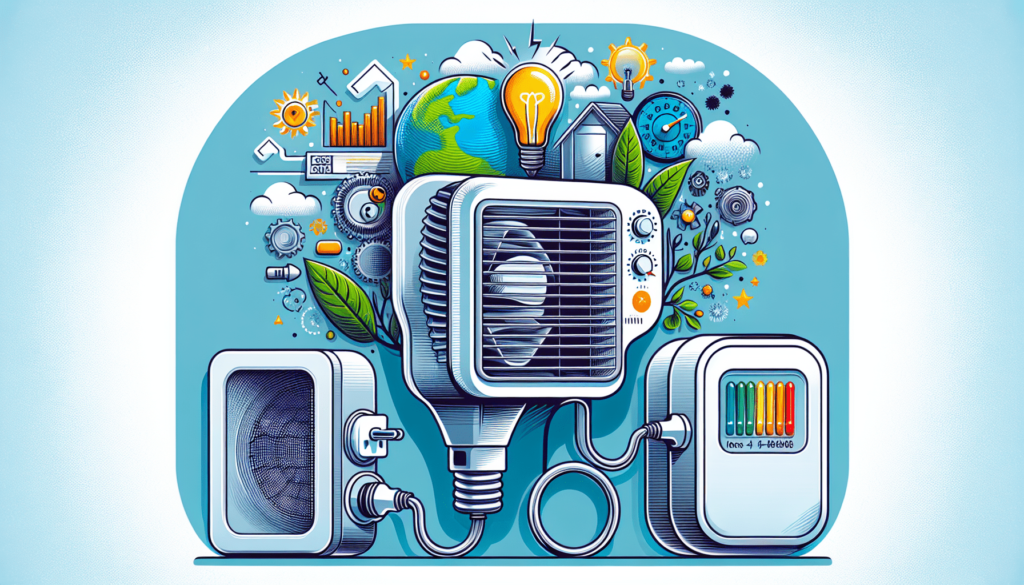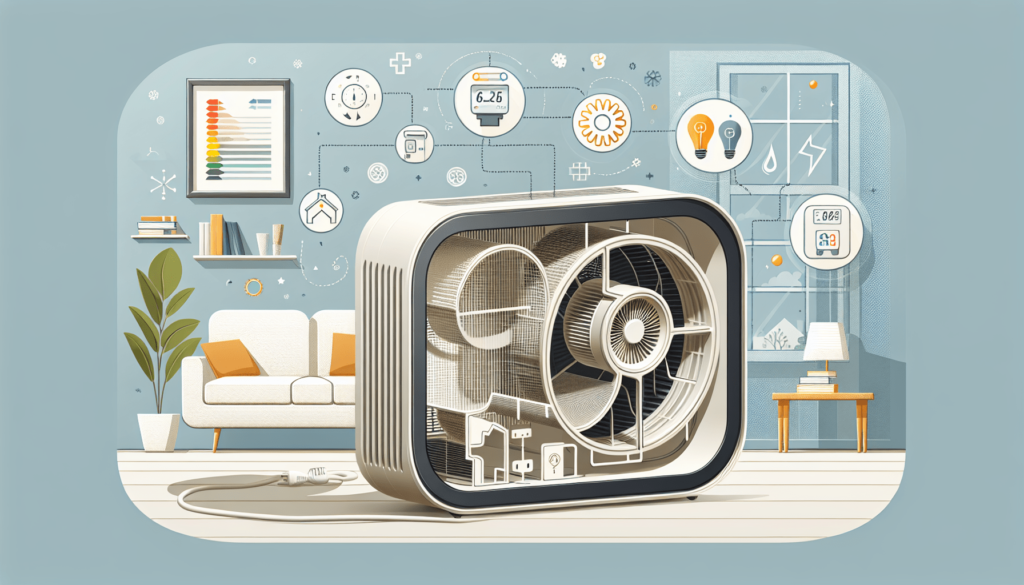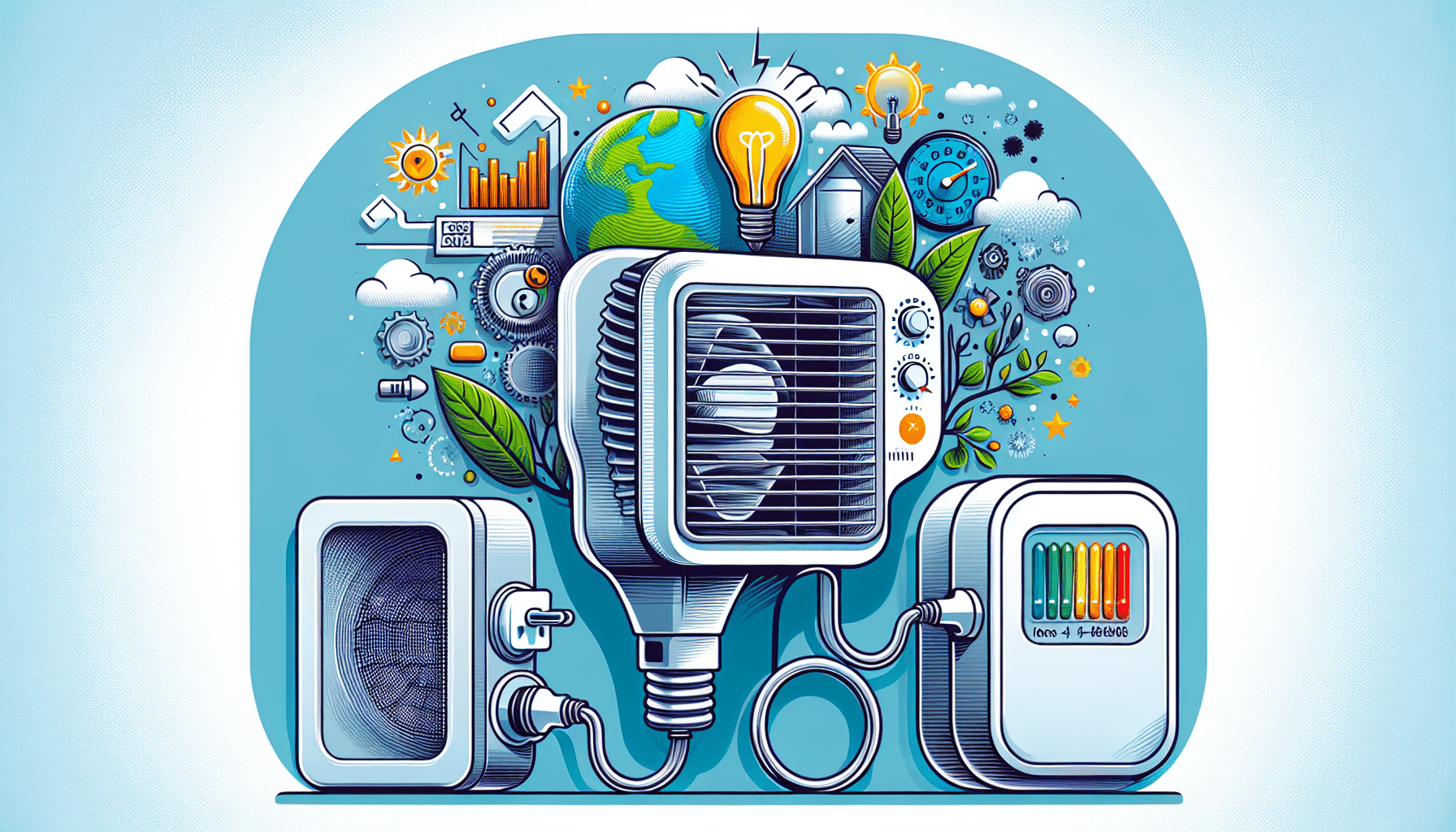Inquiring about the energy consumption of an air purifier? Look no further! This article aims to shed light on the amount of electricity an air purifier typically uses. Discovering this information can help you make an informed decision about whether an air purifier is the right choice for you. So, let’s dive into the topic and uncover the secrets behind the energy usage of these popular appliances.
Factors Affecting Electricity Usage
Air purifiers can be an excellent addition to your home, providing cleaner and healthier air. However, it’s important to consider the factors that can affect their electricity usage. By understanding these factors, you can make informed decisions about your air purifier usage and potentially reduce your energy consumption. Here are some key factors to consider:
Size and Power of the Air Purifier
The size and power of the air purifier play a significant role in its electricity usage. Generally, larger air purifiers with more powerful motors consume more electricity. If you have a small room or space, choosing an air purifier that is appropriately sized can help minimize energy consumption without compromising on effectiveness. Additionally, it’s essential to consider the room’s square footage and choose an air purifier that matches it accordingly.
Fan Speed Settings
Air purifiers often come with multiple fan speed settings, allowing you to adjust the airflow and filtration intensity. However, it’s crucial to note that higher fan speeds typically consume more electricity. If you’re looking to conserve energy, opting for lower fan speed settings can be a wise choice. It’s also worth experimenting with different settings to find the optimal balance between air purification and energy efficiency.
Operational Hours
The number of hours you run your air purifier per day directly impacts its electricity usage. The longer the operational hours, the more energy it will consume. If you tend to leave your air purifier running continuously, you may be using more electricity than necessary. Consider analyzing your indoor air quality needs and create a schedule for running the air purifier only when it’s needed the most. This way, you’ll reduce energy consumption while still enjoying the benefits of clean air.
Usage Patterns
Understanding your usage patterns can also help minimize electricity usage. If you spend most of your time in specific areas of your home, such as the bedroom or living room, consider using the air purifier in those spaces only. By strategically placing and using the air purifier where it’s most needed, you can optimize its performance and reduce energy waste.
Power Consumption Measurements
To get a better grasp of your air purifier’s electricity usage, it’s important to understand various power consumption measurements.
Wattage Ratings
Air purifiers typically come with wattage ratings, which indicate the amount of power they consume during operation. Wattage measures the rate of energy consumption, and higher wattage ratings indicate higher electricity usage. When comparing different air purifiers, pay attention to their wattage ratings and choose models that offer a balance of effectiveness and energy efficiency.
Usage in Kilowatt-Hours
Another useful unit for measuring electricity usage is kilowatt-hours (kWh). This unit represents the amount of energy consumed over time. To calculate the kWh usage of your air purifier, multiply its wattage rating by the number of hours you run it each day, and then divide by 1000. This simple calculation will give you a clearer understanding of the actual energy consumption of your air purifier.
Comparing Energy Efficiency
When shopping for an air purifier, it’s wise to compare the energy efficiency of different models. Look for energy-efficient certifications or labels, such as ENERGY STAR. These certifications indicate that the air purifier meets specific energy efficiency standards, helping you choose a model that can effectively clean the air while minimizing electricity usage.

Calculating Electricity Usage
By calculating the electricity usage of your air purifier, you can better manage your energy consumption and make informed decisions.
Determining Power Consumption
To determine the power consumption of your air purifier, you need to identify its wattage rating, which is commonly listed on the product label or in the user manual. Once you have this information, multiply the wattage rating by the number of hours you run the air purifier per day. This calculation will give you the daily power consumption of your air purifier in watt-hours.
Estimating Daily Energy Consumption
To estimate your daily energy consumption in kilowatt-hours, divide your daily power consumption (in watt-hours) by 1000. For example, if your air purifier consumes 500 watt-hours per day, dividing that by 1000 will result in 0.5 kilowatt-hours of energy consumption.
Monthly and Yearly Estimates
To get a clearer picture of the overall electricity usage of your air purifier, multiply your daily energy consumption (in kilowatt-hours) by the number of days in a month or year. This calculation will give you an estimate of your monthly and yearly energy consumption. By keeping track of these estimates, you can monitor your air purifier’s impact on your energy bills and make any necessary adjustments to minimize costs.
Tips for Reducing Electricity Usage
If you’re looking to reduce the electricity usage of your air purifier, consider following these tips:
Choosing Energy-Efficient Models
Investing in an energy-efficient air purifier can significantly reduce your electricity consumption. Look for models with ENERGY STAR ratings or other recognized certifications. These models have been designed to meet strict energy efficiency standards, ensuring effective air purification while minimizing power consumption.
Optimizing Fan Speed Settings
Experiment with different fan speed settings to find the optimal balance between air purification and energy efficiency. Lower fan speeds consume less electricity, so if you can still achieve the desired air quality at a lower setting, you’ll save energy. Adjust the fan speed based on your specific needs and the air quality of your surroundings.
Using the Air Purifier Wisely
Running the air purifier only when necessary can help conserve electricity. If you’re leaving the house or entering a room with relatively clean air, consider turning off the air purifier temporarily. Additionally, use the air purifier strategically in rooms that require it the most, rather than running it throughout your entire home.

Energy Costs and Savings
Understanding the energy costs associated with air purifiers can help you manage your expenses and identify potential savings.
Electricity Rates
Electricity rates vary in different regions and countries. Familiarize yourself with your local electricity rates to get an accurate understanding of how air purifier usage impacts your energy bills. By knowing the cost per kilowatt-hour, you can calculate the financial implications of running your air purifier.
Cost per Hour of Operation
To estimate the hourly cost of running your air purifier, multiply its energy consumption per hour (in kilowatt-hours) by your local electricity rates. This calculation will give you a clear idea of how much it costs to keep your air purifier running continuously.
Potential Savings with Energy-Efficient Models
Opting for an energy-efficient air purifier can lead to significant cost savings over time. Although energy-efficient models may have a higher upfront cost, their reduced electricity consumption can result in long-term savings on your energy bills. Consider the investment as a way to save both energy and money in the future.
Environmental Impact
Not only does electricity usage impact your finances, but it also has environmental implications. Understanding the environmental impact of air purifiers can help you make eco-conscious choices.
Reducing Carbon Footprint
Air purifiers indirectly contribute to carbon emissions through electricity generation. By minimizing your air purifier’s energy consumption, you can reduce the demand for electricity, resulting in lower carbon dioxide emissions. Opting for energy-efficient models and using the air purifier wisely are effective ways to reduce your carbon footprint.
Choosing Renewable Energy Sources
Another way to decrease the environmental impact of your air purifier is to power it with renewable energy sources, such as solar or wind power. By using clean energy sources, you can ensure that the electricity consumed by your air purifier is generated sustainably, minimizing greenhouse gas emissions and promoting a greener future.
Conclusion
Understanding the factors that affect the electricity usage of air purifiers is essential for making informed decisions about their usage. Considering the size and power of the air purifier, fan speed settings, operational hours, and usage patterns can help optimize energy efficiency without compromising air quality. By calculating electricity usage, exploring tips for reducing consumption, and understanding energy costs and savings, you can effectively manage your air purifier’s impact on your energy bills. Additionally, being mindful of the environmental impact and exploring renewable energy sources can contribute to a greener and more sustainable lifestyle. With this comprehensive knowledge, you can choose the right air purifier and enjoy clean air while minimizing your ecological footprint.

